The ZZ plant (Zamioculcas zamiifolia) is a favorite houseplant due to its ease of growing, but did you know that it has toxic properties? Indeed, the ZZ plant is toxic to cats, dogs, and humans to a certain extent.
Let’s explore the plant’s toxicity to better know how to avoid getting sick from it.
What makes the ZZ plant toxic?
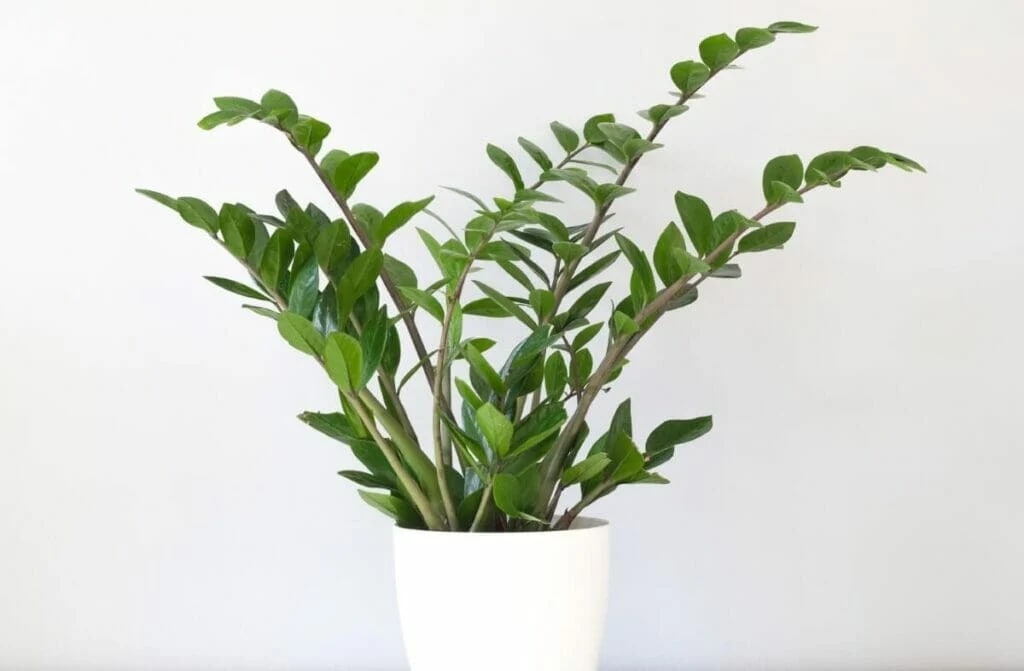
Image by Petal Republic
The ZZ plant is toxic because of calcium oxalate crystals within its tissues. Calcium oxalate crystals are found in various plants, including edible vegetables.
These crystals are composed of calcium and oxalate. Together, they form microscopic sharp structures that cause irritation.
When you eat the ZZ plant or touch it, these crystals can make you feel uncomfortable and sick, leading to symptoms like nausea and vomiting. In ZZ plants, these crystals act like chemical bodyguards, protecting the plant from being eaten by animals.
Even though these crystals can cause a bit of harm, many plants, including ZZ plants, have them naturally. The reaction they cause can be different for each person.
Other plants, like spinach, beets, rhubarbs, Swiss chard, sweet potatoes, and tea leaves, also have these crystals, but we usually eat them with no problem. Just remember, it’s good to be careful around ZZ plants and similar ones to stay safe.
How poisonous is the ZZ plant?
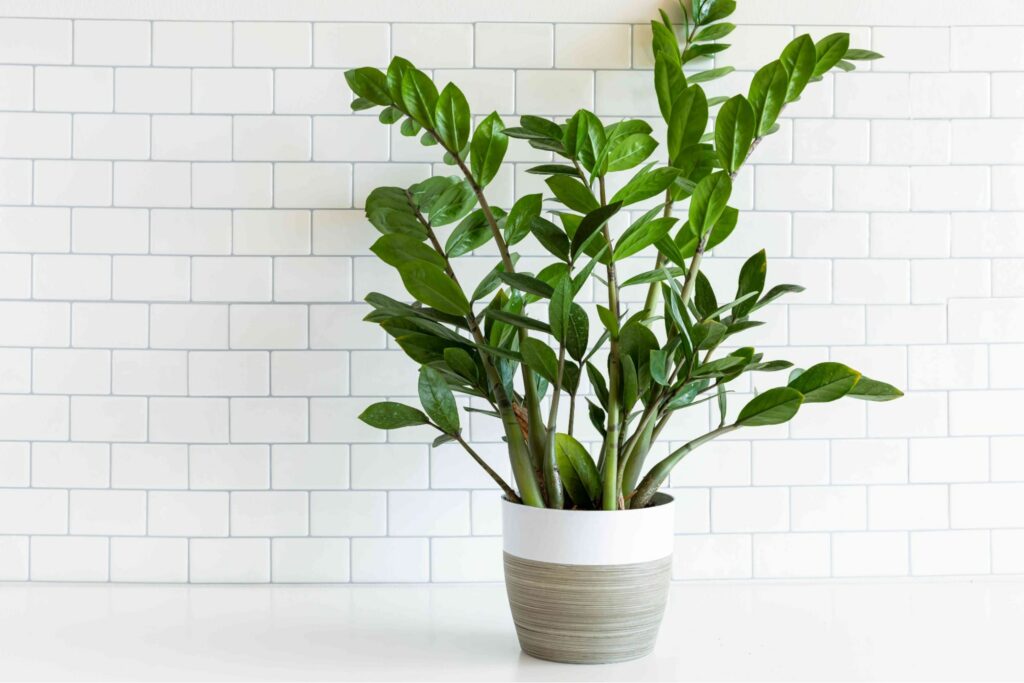
Image by The Spruce
The ZZ plant is mildly toxic if ingested. Eating any part of the plant might give you symptoms like queasiness, throwing up, or an upset stomach.
And watch out for its sap. If it gets on your skin, get ready for some redness, itching, or rashes.
Even if you just touch the leaves, it could be troublesome. This is especially true for those who are sensitive or allergic to the plant’s not-so-friendly chemicals.
The intensity of the symptoms? Well, that depends on how touchy your body is to this plant.
For people with sensitivity or allergy to the toxin, even touching the leaves can induce symptoms. The severity of the symptoms usually depends on the person’s sensitivity level.
How toxic are ZZ plants to pets?
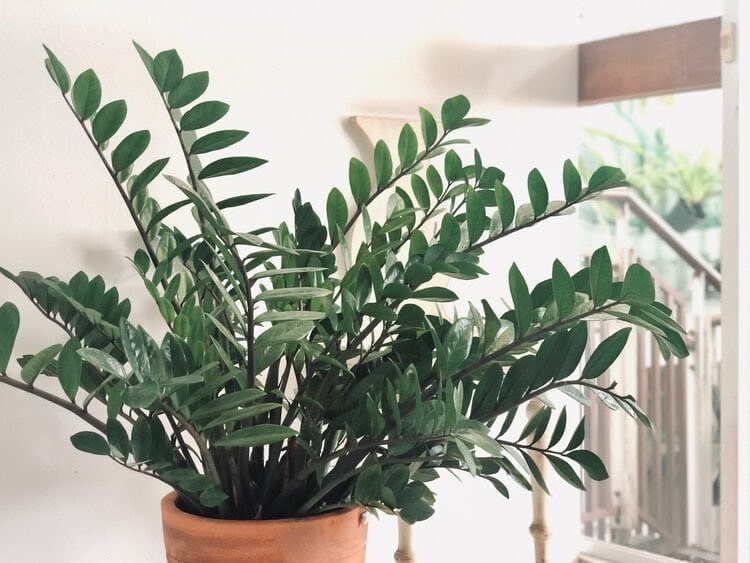
ZZ plants are mildly toxic to pets. Serious problems are rare.
So, while it’s still a good idea to keep an eye on our furry pals, the chances of anything really serious happening are pretty low.
What happens if your cat or dog eats part of a ZZ plant?

If your cat or dog eats part of a ZZ plant, they may exhibit early symptoms like excessive drooling, vomiting, or signs of oral irritation.
The time it takes for these symptoms to pop up can vary. For many pets, you might see signs within a few hours.
But the timing can be a bit tricky. The exact time frame depends on how much they ate, how big they are, and how sensitive they are.
At times, it could take half a day for your pets to show the symptoms. Sometimes, symptoms can even show up a day later.
If you suspect your furry friend had a ZZ plant snack, it’s a good idea to get in touch with the vet. They can give the best advice on what to do next and make sure your pet stays in tip-top shape.
What are the symptoms of ZZ plant poisoning in pets?

If your pet is experiencing ZZ plant poisoning, they might have symptoms like lots of drooling, vomiting, and diarrhea.
They might also paw at their mouth or rub their face. In some cases, pets might find it hard to swallow or breathe.
The symptoms can be different for each pet. Even though ZZ plant issues are usually not too serious, it’s important to keep an eye out for any strange behavior or if your pet seems upset.
If you notice anything unusual, it’s a good idea to check in with the vet to make sure everything’s okay.
What happens If I eat the ZZ plant?
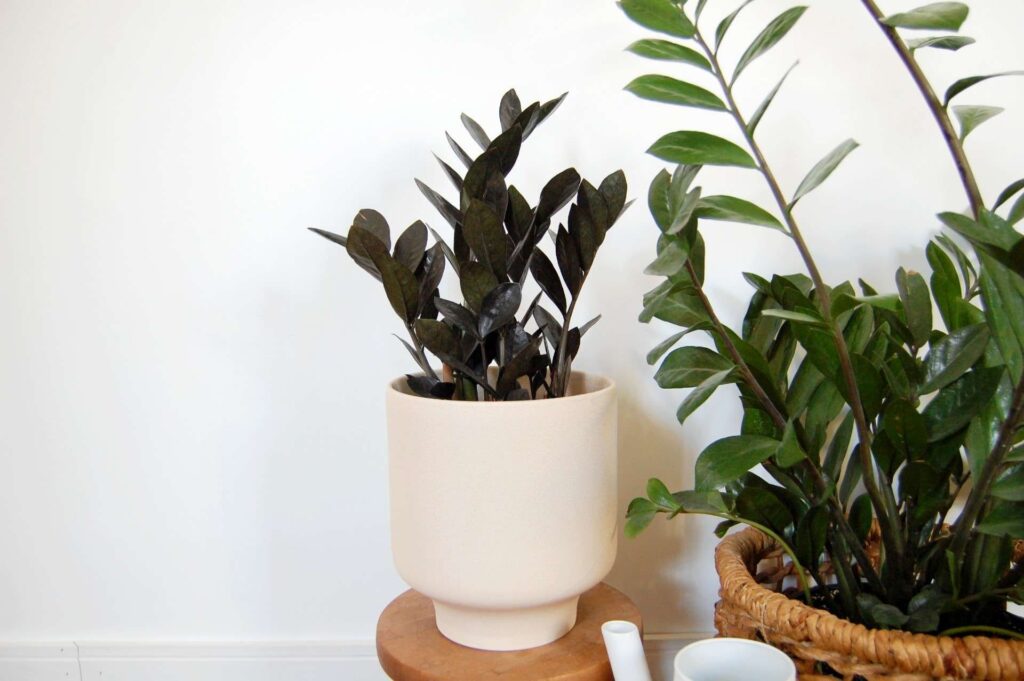
If you eat the ZZ plant, you might feel uncomfortable, nauseous, or even throw up. Usually, these problems show up soon after you eat the plant.
Even though ZZ plant issues are usually not too serious, it’s smart to get help from a doctor if you eat any part of it. They can figure out the best way to help you feel better based on how bad your symptoms are.
What happens if I touch the ZZ plant?
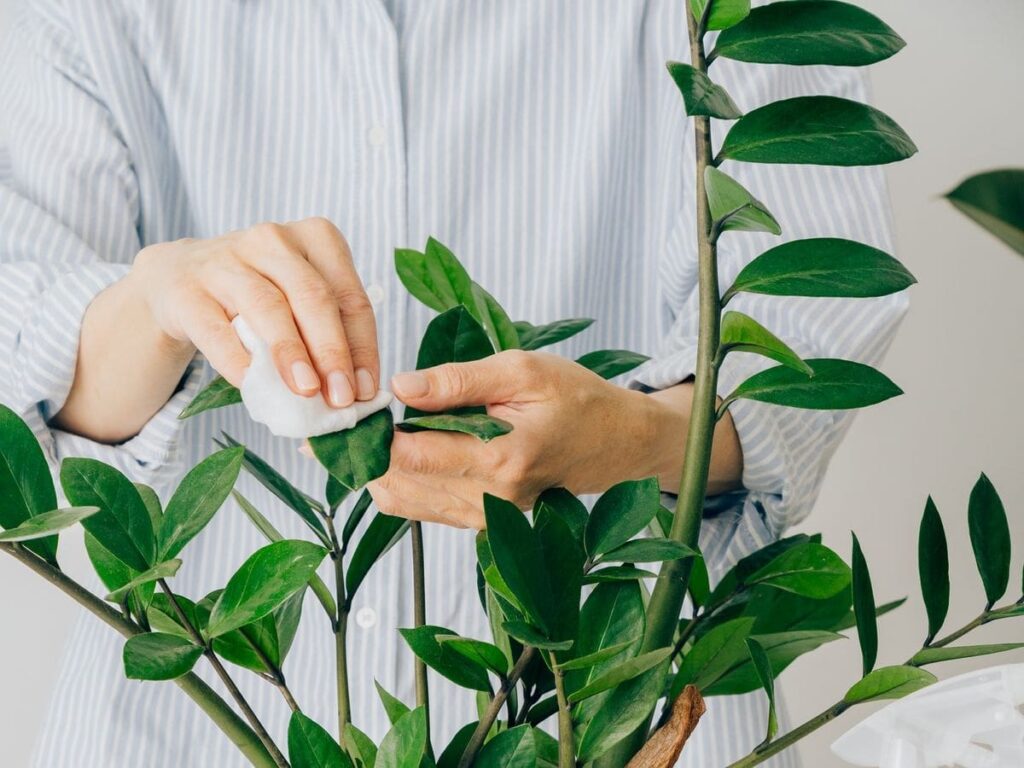
If you touch the ZZ plant, you might experience skin irritation. Since the plant’s sap contains calcium oxalate crystals, they can make your skin red, itchy, or give you a rash
This irritation usually happens if you handle the leaves or stems and the sap gets on your skin. For most people, it’s not a big deal, just a bit annoying.
But if you have sensitive skin, it might bother you more. In this case, it’s best to be careful when handling ZZ plants and wash your skin well afterward.
What to Do if a Child Eats ZZ Plant
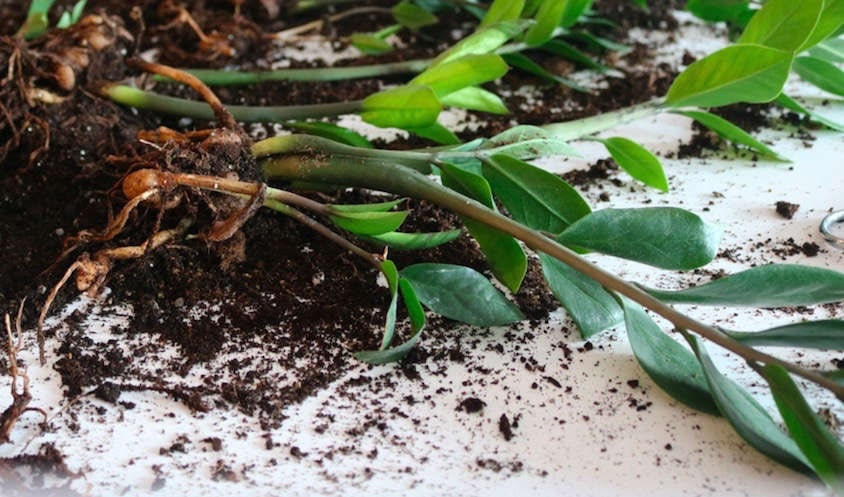
When a child eats a ZZ plant, it’s important to act right away. It’s best not to wait for symptoms to show up and be proactive.
Here’s what to do if a child accidentally eats parts of a ZZ plant.
Get Medical Attention

Get in touch with your local poison control center. They’re pros at handling situations like this.
If things seem serious or you’re not sure what to do, head to the doctor right away. They can give you the best advice.
Do Not Wait for Symptoms to Appear

If a child ate a ZZ plant, it’s really important to talk to a doctor even if they don’t seem sick right away. Sometimes, symptoms take time to show up, and it’s better to get help early.
Even if everything seems okay, getting advice from a medical pro is the smart move. They can guide you on what to do next and make sure the child stays healthy.
Avoid Self-Induced Vomiting

If you’ve eaten something you shouldn’t have, like a ZZ plant, don’t try making yourself throw up unless a medical professional tells you to. Doing it without their guidance can cause more problems.
Vomiting can sometimes make things worse. It’s important to let healthcare experts decide the best course of action based on what you ate and your specific situation.
So, if you find yourself in this situation, reaching out to medical professionals for advice is the safest way to handle it.
Provide Important Information

If possible, you need to share details. Let the medical professionals know how much of the plant the child ate and what symptoms they’re experiencing.
This info helps guide them in figuring out the best way to take care of the child. Whether it’s a little nibble or a bigger helping, telling them exactly what happened can make sure the child gets the right care to feel better soon.
Monitor the Child

Look out for any changes in their behavior, like acting differently than usual. Pay attention to any symptoms or signs of distress.
If you notice anything unusual, it’s important to share this information with healthcare professionals. They can better help and give advice if they know what’s going on.
Being ready to provide details about the child’s behavior and any symptoms ensures they get the best care if needed.
Prevent Future Incidents

Image by Positive Bloom
If you have ZZ plants at home, make sure to keep them out of the reach of kids. It’s a good idea to teach children not to touch or eat plants without asking first.
ZZ Plant Toxicity: Safety Tips and Prevention
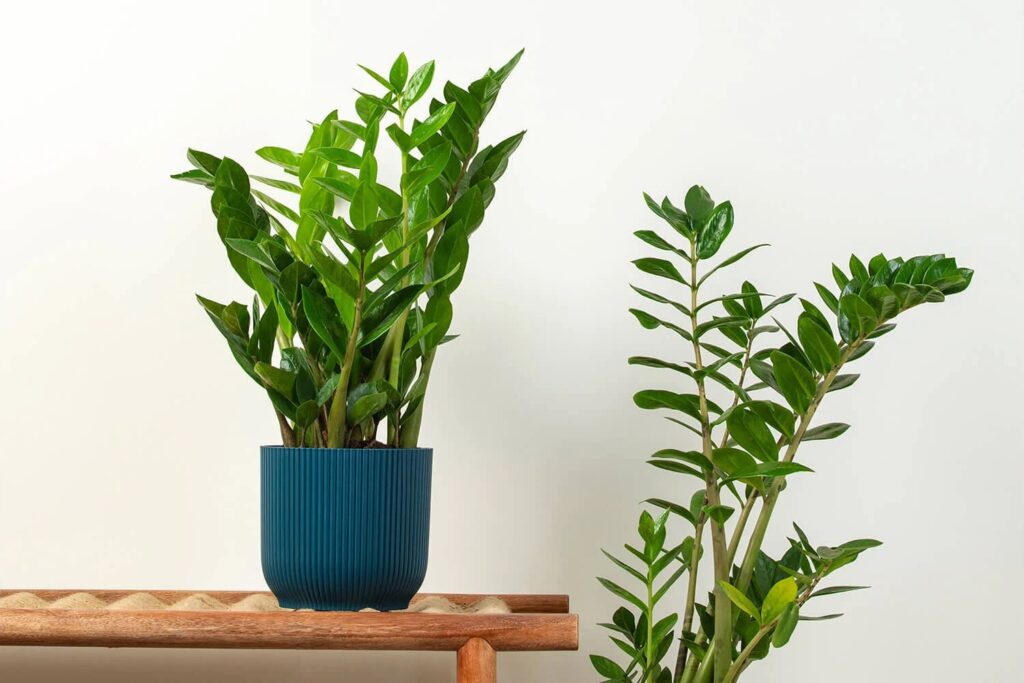
The ZZ plant is a popular indoor plant and now that you know its toxicity level, you’re more aware of what to do. By following the steps below, you’ll be able to minimize the risks associated with growing the plant to keep everyone at home safer.
Keep Out of Reach

To keep ZZ plants away from curious kids and playful pets, it’s a good idea to put them in spots that are hard to reach. You can place them up high on shelves or even use hanging baskets.
This way, everyone stays safe, and ZZ plants can still add a touch of greenery without any worries.
Use Gloves When Handling
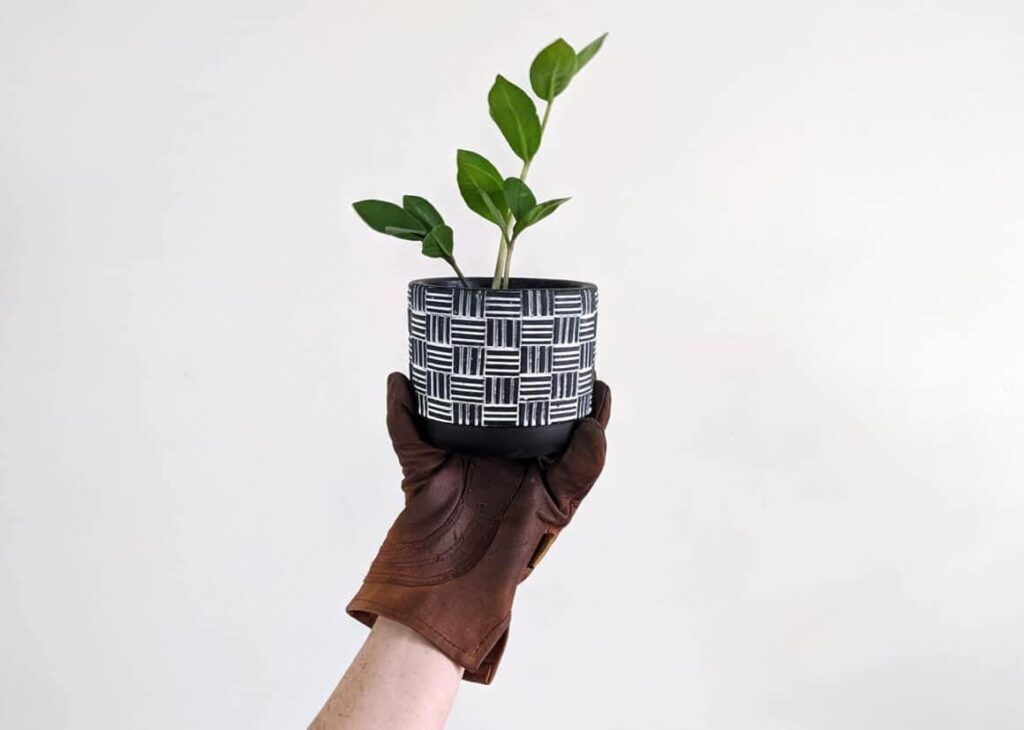
If you have to touch or move a ZZ plant, put on gloves. The plant’s sap can sometimes irritate your skin, and wearing gloves helps protect your hands from that irritation.
It’s an easy way to keep your skin safe and avoid any discomfort. So, if you find yourself dealing with ZZ plants, don’t forget to glove up.
Educate Children

It’s important to tell kids not to touch or eat plants without asking first. Let them know that some plants, including the ZZ plant, can harm them or make them feel bad if they touch or eat them.
Help them understand that it’s best to enjoy plants from a distance unless an adult says it’s okay. This way, they can stay safe and have fun exploring the world of plants without any ouchies.
Monitor Pets
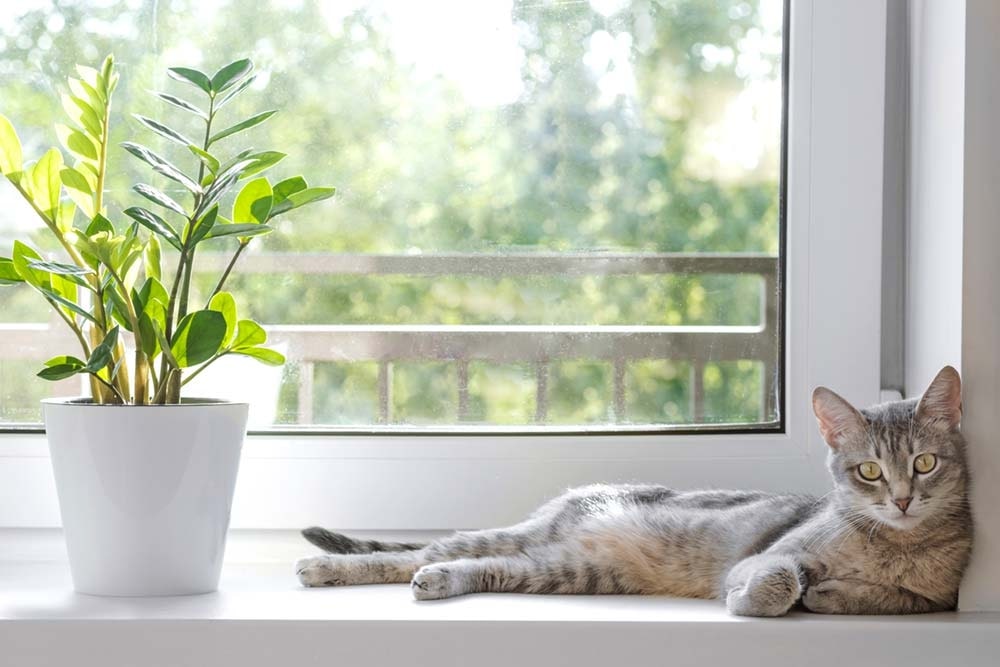
Even though ZZ plant problems for pets are usually not too serious, it’s best to keep an eye on them and make sure they don’t start munching on the leaves. If you see your pets showing interest in the ZZ plant, guide them away to keep them safe.
Wash Hands After Handling

Once you’re done touching ZZ plants, it’s a good idea to wash your hands really well with soap and water. This helps get rid of any sap that might be on your skin and prevents any chance of irritation.
It’s a simple step, but it goes a long way in making sure your hands stay happy and irritation-free.
Seek Professional Advice

If you eat ZZ plants and feel sick or if they make your skin irritated, don’t wait. Get in touch with a healthcare professional or call a poison control center right away.
They can give you the best advice on what to do next and how to feel better. It’s important to reach out to them quickly, especially if you’re not sure how bad it is.
Display Warning Signs
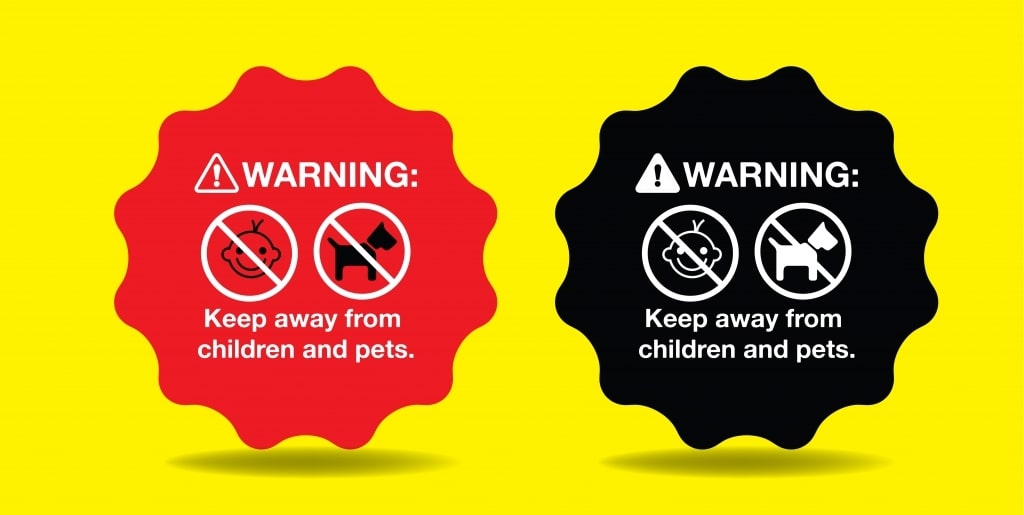
Image by Plantscapers
Warning signs remind everyone that the plant can be a bit harmful and that it’s important not to touch or eat it. This simple reminder helps everyone in the house remember to be careful around the ZZ plant.
Choose Safer Alternatives
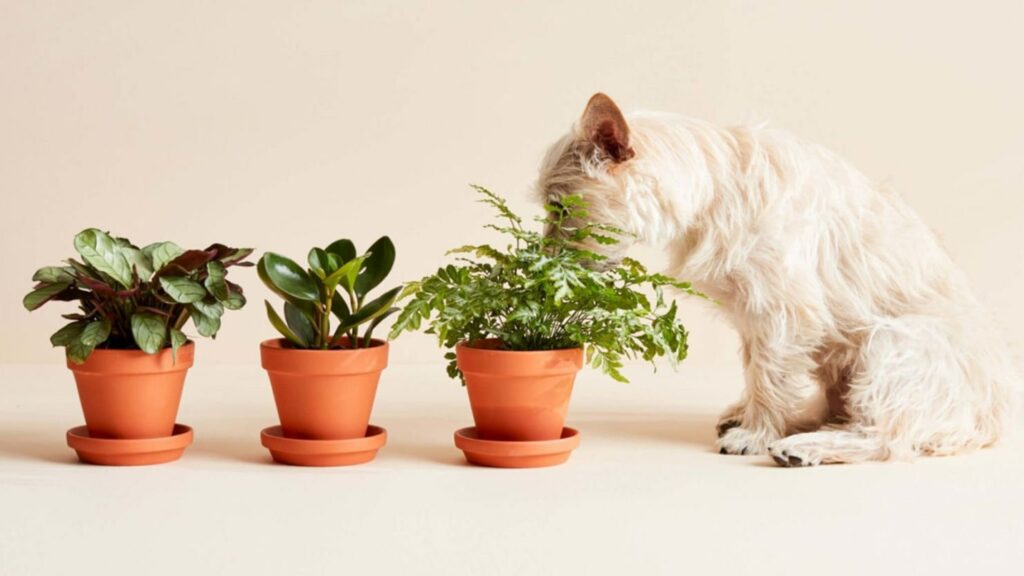
If you’re worried about the ZZ plant being a bit harmful, you can choose other indoor plants that are safe. There are plenty of non-toxic options that can still make your space look great without any potential harm.
These alternatives can add a touch of green to your indoor space without the worries of potential toxicity.
How to Handle ZZ Plants Safely
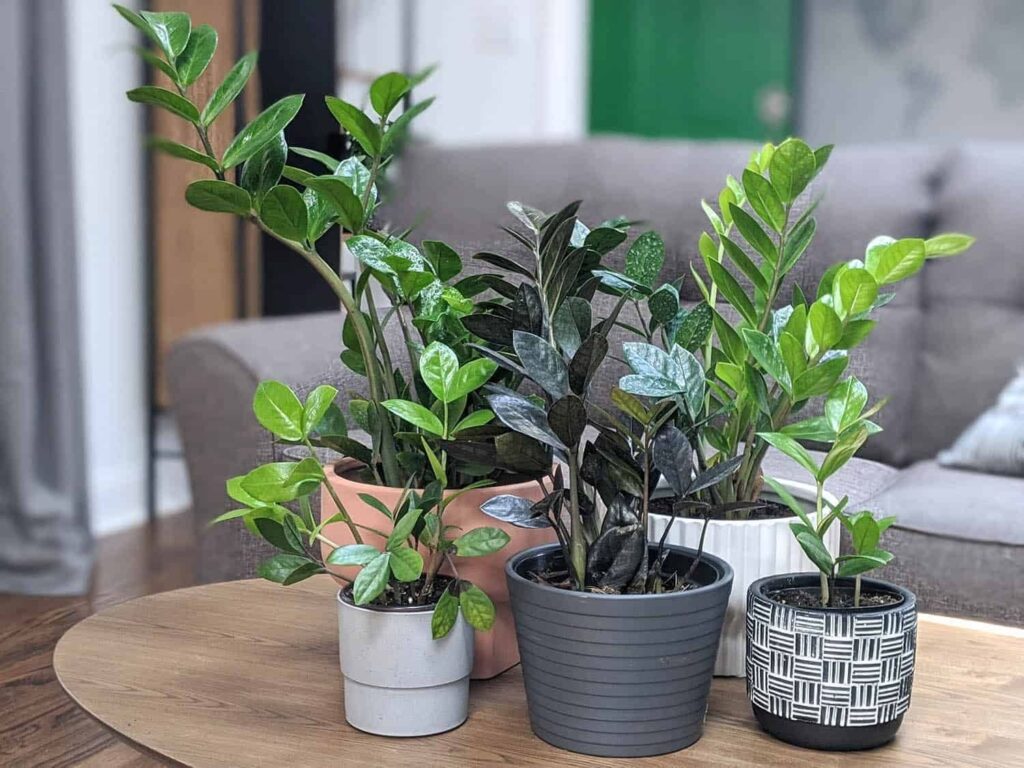
Knowing how to handle ZZ plants safely will help homeowners avoid accidental ingestion while keeping curious children and pets secure. By using these guidelines in your plant care routines, you ensure the well-being of all occupants in your house.
Choose Safe Locations
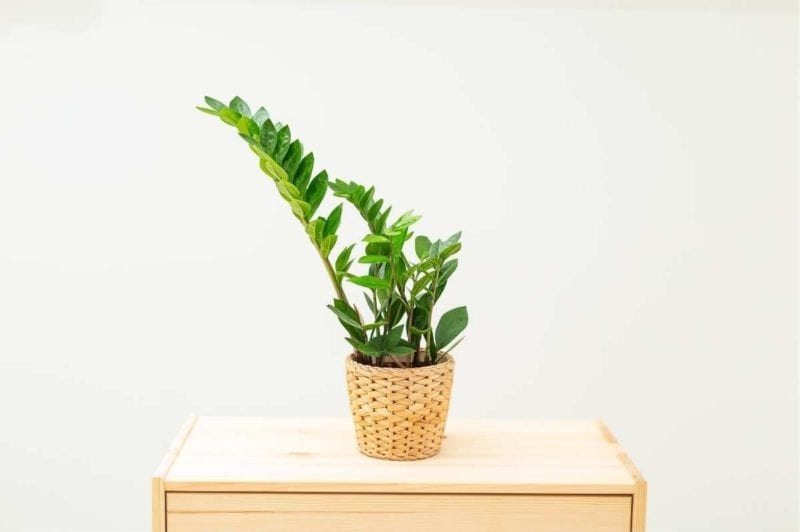
If you have ZZ plants and want to keep them safe from kids and pets, put them in areas that are hard to reach. You can place them on tall shelves or use hanging containers.
This way, curious little hands or paws won’t easily get to them.
Avoid Touching the Face and Eyes
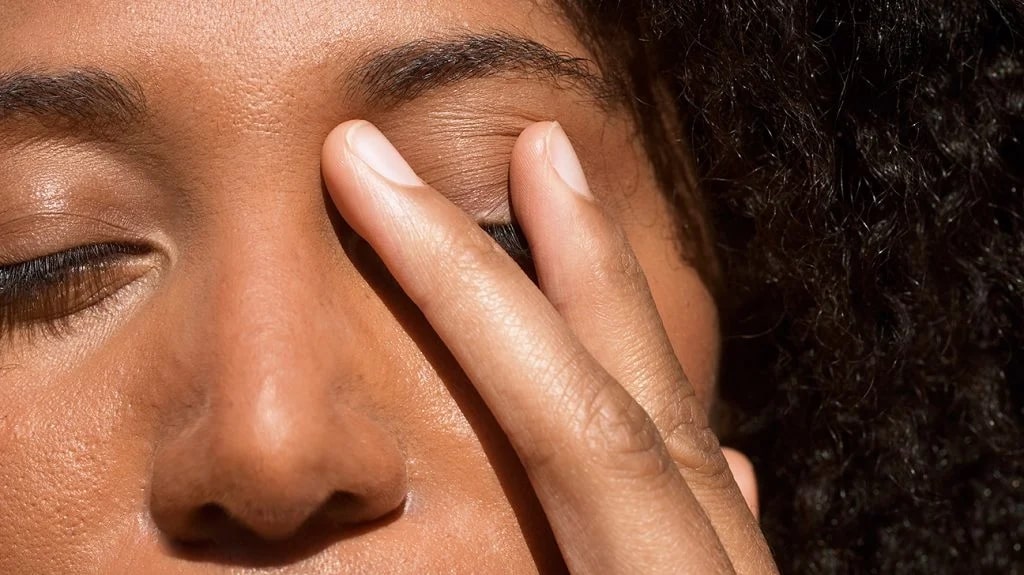
When you’re dealing with ZZ plants, try not to touch your face, especially your eyes. This helps make sure you don’t accidentally transfer the sap from the plant to sensitive areas.
Educate Family Members

Tell your family about ZZ plant safety. Make sure everyone knows how to handle the plant with care.
It’s important that everyone understands not to touch or eat the ZZ plant without being careful.
Keep Tools Clean
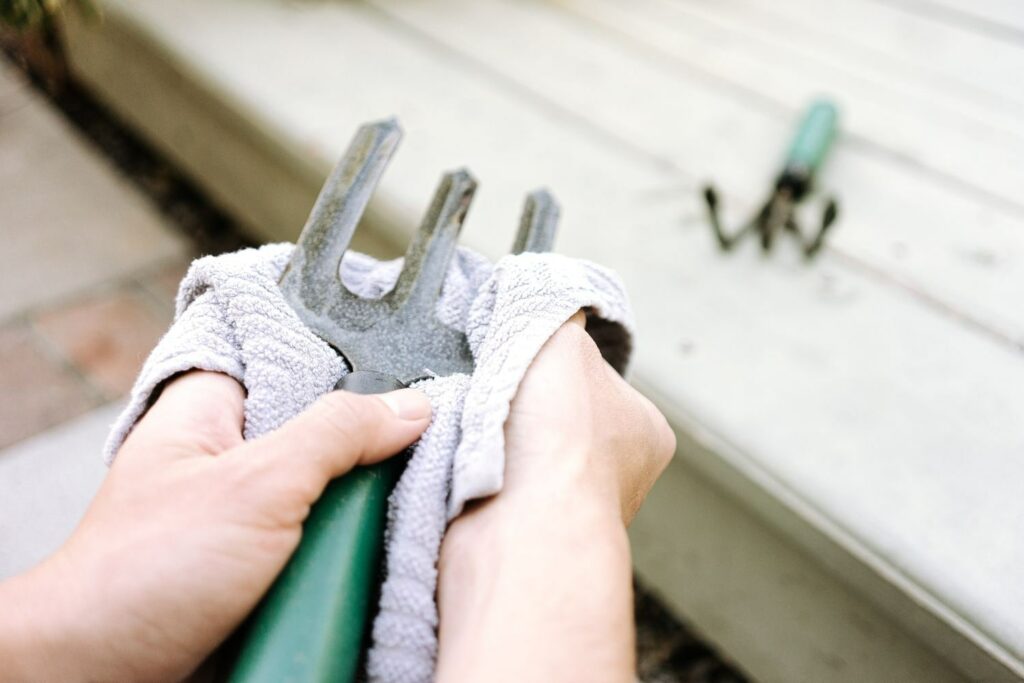
After using gardening tools with ZZ plants, make sure to clean them really well. This helps stop the plant sap from spreading to other places or plants.
Monitor for Allergic Reactions
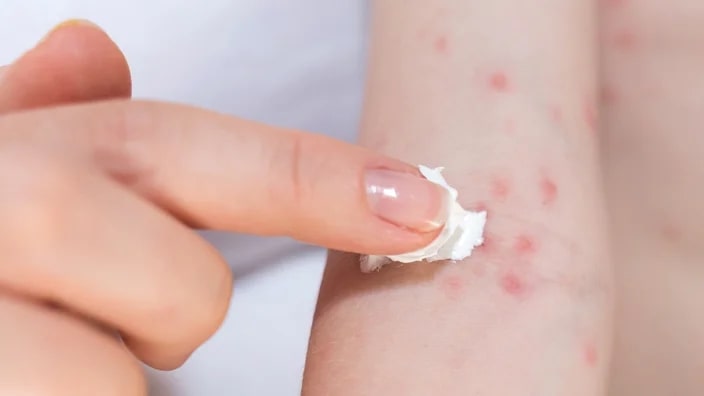
Allergies can be different for each person. Even though ZZ plant issues are usually mild, getting medical attention ensures you get the right care for your specific situation.
If you notice any unusual reactions, check with a doctor right away to make sure everything is okay.





